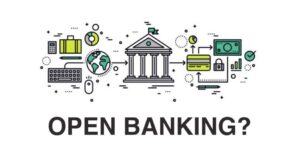In today’s fast-paced digital world, financial education is more important than ever. Teens have grown up with mobile phones and the internet, so learning about digital currencies, online shopping, and cash transactions is a natural progression for them. Parents need to ensure that their teens not only understand how to use money but also how to manage it properly. Digital banking for teens offers a unique opportunity to combine education with practical financial skills in a safe and regulated way.
What Digital Banking Means for Teens
Teens who use digital banking typically have a bank account linked to a mobile app. The app usually includes a debit card, spending tracker, and parental controls. These features allow children to manage money safely, under parental supervision. Through these features, they learn how to create a budget, track expenses, save, and even set financial goals. These are important skills that adults should possess. Simply giving teens money isn’t enough; you also need to show them how to manage it wisely.
Choosing the Right Digital Bank for Your Teen
There are many factors to consider when choosing a digital bank for teenagers. Some digital banks are better suited for young people than others. When choosing a bank, choose one with a simple, user-friendly interface, clear spending overviews, clear savings goals, and comprehensive educational content. Parental controls are also important, as they allow you to set spending limits, approve transactions, and monitor your child’s account activity. It’s also crucial to choose a bank with a secure system to ensure your teenager’s financial information is safe.
Setting Financial Limits
Establishing rules and goals together is one of the most effective ways to influence your teenager’s financial development. Discuss weekly or monthly allowances, how they will be spent, and how much they should save. Teach your teenager to divide their money into needs, wants, and savings. Many digital banking apps include visual elements like pie charts and progress bars to make these concepts more engaging. Giving your child a voice in these choices will help them feel responsible and in control of their finances.
Teach your Child the Importance of Safety
When it comes to digital banking, safety is crucial, especially for teens who may be unaware of the dangers of phishing, scams, or disclosing personal information online. As a parent, you should communicate with your child about how to keep their financial information safe. Teach your child how to recognize unusual communications, avoid sharing passwords, and only use secure networks when using banking apps. Digital banks for teens often have features like transaction reminders and biometric logins to help young people remember safety.
Start Saving and Budgeting
A major benefit of digital banking is that it makes saving and money planning easier. Many digital banks for teens allow users to set different savings goals or use a rounding tool to automatically save extra money with transactions. These tools can help people save regularly. By teaching teens how to create a budget based on short-term needs and long-term goals, you can help them learn financial responsibility and appreciate the importance of patience.
Gradually Build Financial Confidence
Digital banking is more than just a way to manage your money; it can also help you learn skills that will be useful throughout your life. Starting early can help your child become more confident in making financial decisions, learn the basics of income, spending, and saving, and understand how their choices impact their lives. This experience can help them prepare for important future events, such as taking a part-time job, applying for a student loan, and even starting to invest. Digital banking is a great way for children to learn about money management because it’s a hands-on activity.
Conclusion
Digital banking is a wonderful way to teach teens about money in a safe, interactive, and practical way. By helping your child open and use a digital bank account, they’ll learn how to manage money for the rest of their lives. The knowledge they gain now, such as setting spending limits and savings goals and how to stay safe online, can help them become financially independent in the future. If your child has the right financial management tools and has consistent conversations about money, digital banking can be a great way to learn about it.
FAQs
1. What’s a good age for teens to start digital banking?
Most digital banks allow minors as young as 13 to open an account, and many offer parental controls.
2. Can parents monitor their children’s digital bank accounts?
Yes, many digital banks allow parents to set transaction limits, alert them when their children are spending money, and ask permission before making purchases.
3. Is digital banking safe for teens?
Reliable digital banks use strong encryption, secure login methods, and fraud detection technology. Parents still need to teach teens how to stay safe online.
4. Do teen accounts come with a debit card?
Indeed, numerous teen accounts typically include a debit card for both in-store and online use, albeit subject to spending limits.
5. Do children earn interest on their savings?
Some digital banks offer savings accounts that earn interest or rewards after reaching their savings goals. This encourages people to save wisely.




